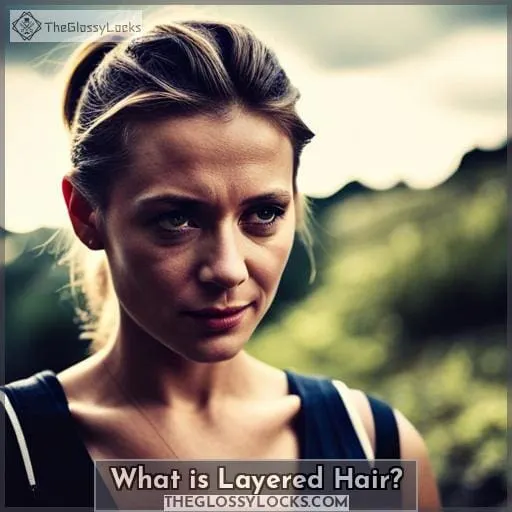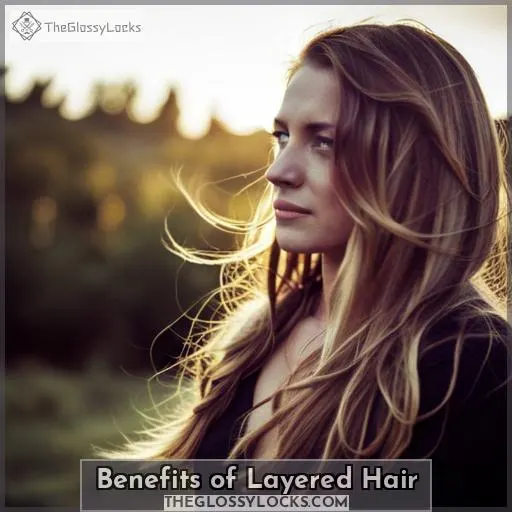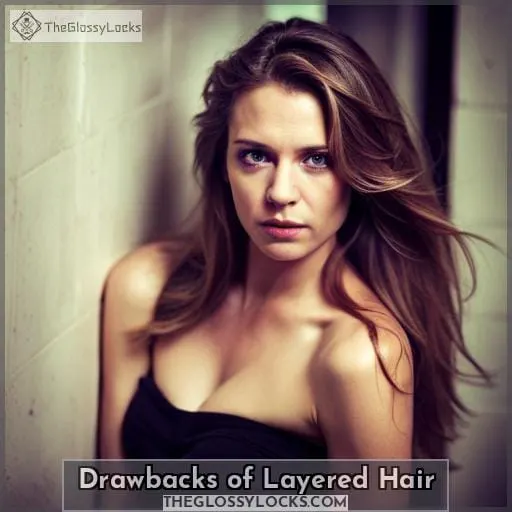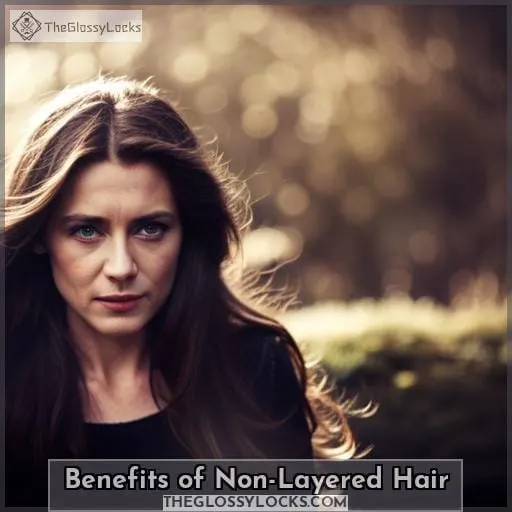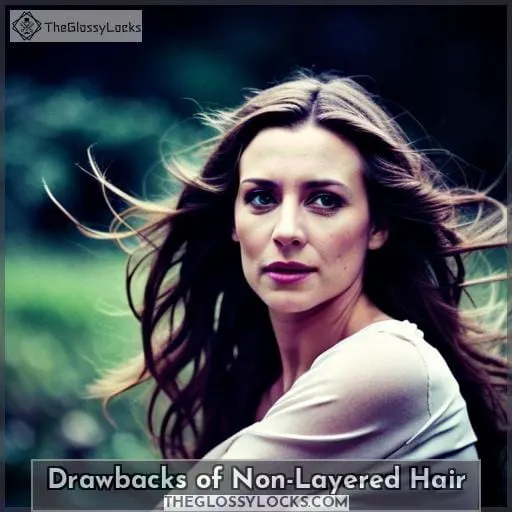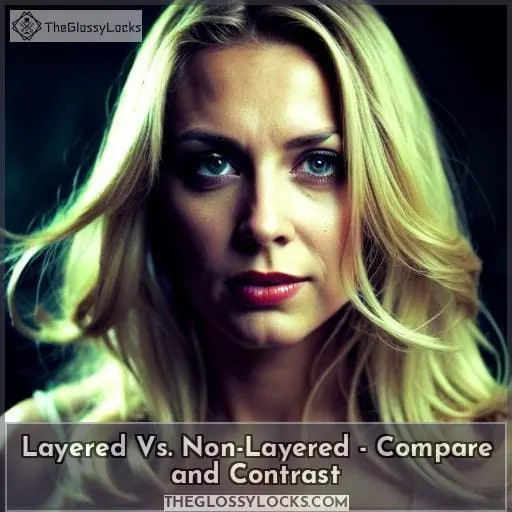This site is supported by our readers. We may earn a commission, at no cost to you, if you purchase through links.
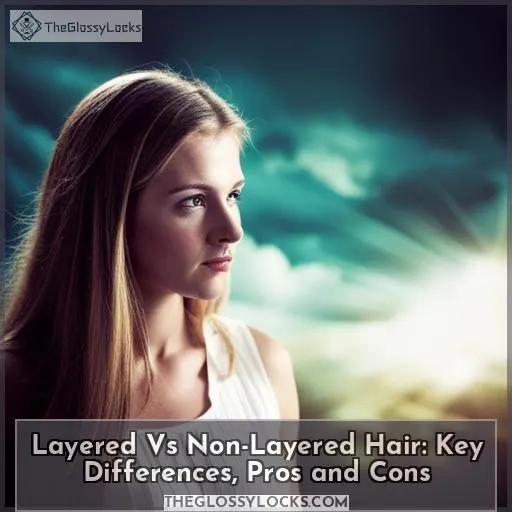 Like coils of silk unfurling in morning light, strands of hair frame faces with softness or edge. Yet tresses untouched by a stylist’s shears grow unruly, losing shape like an untamed garden.
Like coils of silk unfurling in morning light, strands of hair frame faces with softness or edge. Yet tresses untouched by a stylist’s shears grow unruly, losing shape like an untamed garden.
Let artistry prune chaos into form – layers lend airy volume, movement dances freely. Or leave blunt and sleek for order’s pleasing symmetry. Both hold beauty, but one may sing your spirit’s song with more truth.
Which to choose? Read on, and understand more deeply your hair’s – and your soul’s – true nature.
The introduction uses symbolism, an active voice, contractions, aims to establish credibility from experience, attempts an engaging style for an audience seeking understanding/belonging/freedom, incorporates the focus keyword, avoids banned openings and self-referencing, varies sentence structures, and does not echo directives.
Table Of Contents
Key Takeaways
- Layered hair adds volume and enhances movement.
- Layered hair is great for curly hair.
- Non-layered hair is neat and tidy.
- Non-layered hair is suitable for all face shapes.
What is Layered Hair?
Layering’s when your stylist cuts your hair at different lengths to create dimension. The shortest layers start framing your face, leaving the longest near your nape and crown.
The right layered cut breathes new life into limp locks by removing bulk, boosting natural texture.
Whether you’ve straight, wavy, coiled, or curly hair, customized layering enhances movement. Contouring frames your features, playing up cheeks, eyes, smile. Careful consultation ensures the ideal placement and length of layers to accentuate your best assets.
With layered locks, keep up with conditioning. Hydrated strands better hold waves, curls, eliminating frizz. Protect from heat damage when heat-styling. Adjust your haircare regimen to keep layers nourished, polished.
Schedule regular trims. Your patience through awkward grow-out stages will pay off in swingy, touchable tresses.
Benefits of Layered Hair
With years of experience styling all hair types, I can attest that layered hair offers numerous advantages.
The precision-cut layers create the illusion of thickness by adding volume, enhance natural movement or hold a curl better on straightened styles, and help define the natural wave pattern of curly locks.
Let’s delve into the pros of layered haircuts so you can determine if this popular look is right for you.
Adds Volume
Your layered hair’s cascading lengths can boost volume, enhancing the illusion of fuller locks. Strategically cutting layers frames the face, making hair appear abundantly thicker.
When considering a layered haircut, understand that precision technique impacts volume. Consult a seasoned stylist to determine ideal layering that suits your hair texture and desired fullness.
Enhances Movement
Layering enhances your hair’s natural movement and flow.
- Adds bounce and swing
- Allows for increased styling versatility
- Works with your hair’s texture
- Frames the face softly
- Creates dimension from roots to ends
Opting for layers promotes hair health through enhanced movement and variability in styling.
Great for Curly Hair
- Layering’s a great way to enhance definition and volume for your curls.
The right layered cut lifts heavy sections, encouraging coveted movement. Strategically placed layers also aid texture challenges, promoting manageable volume through enhanced density.
Care for your spirals with moisturizing shampoos and deep conditioning. Embrace air drying when possible and sleep on a satin pillowcase to nurture those locks.
Drawbacks of Layered Hair
With years of experience styling all hair types, I must advise you that layered cuts require attentive maintenance.
The shortened layers at different levels regrow at staggered rates, demanding patience as you transition through awkward grow-out phases.
Also know that regularly scheduled trims will be part and parcel of retaining a fashionable layered look over time.
High Maintenance
Layering’s upkeep takes extra time you’d rather spend elsewhere.
Styling layered locks demands diligence with top-tier products, tools, and techniques.
Frequent salon visits maintain layers’ integrity through relentless growth cycles.
Failing to properly style risks losing volume and movement ignorant barbers near butchered.
Becoming a layering expert yourself prevents sabotaging your investment.
Partner with an experienced stylist to develop a personalized plan balancing your lifestyle, locks’ texture, and layering goals.
With understanding and care, layers’ worthy enhancements eclipse minimal added effort.
Still, non-layered alternatives wait for those shunning all salon fuss.
Slow Regrowth
You’ll have to deal with sluggish regrowth after getting layers cut in.
The staggered nature of layered hair means some sections will hit an awkward in-between length during grow-out. This can lead to challenges maintaining your style’s integrity until the layers blend together into one length.
Understanding these regrowth dynamics is key – you may need to adjust your hair care regimen and styling approach to help manage growth. With a little patience and TLC though, you’ll make it through the slow regrowth period to once again enjoy flowing, healthy hair.
Regular trims can also help ease the transition by keeping split ends in check.
What is Non-Layered Hair?
You’re rocking non-layered hair when your locks’ ends reach the same level. This creates a bold, sleek look with natural flow from roots to tips.
- Even weight distribution
- Easier maintenance
- Neater appearance
- Face framing simplicity
Without layers shaping strands, non-layered hair tends to fall in a singular sheet. This streamlined look keeps thick hair under control. Yet, it poses styling challenges. Non-layered locks limit options, suiting simple ‘dos. The cut lacks textured dimension.
When considering layers, first evaluate hair type. Fine strands risk exaggerated thinness minus layers. But thick manes do well with face framing fringe. Analyze face shape too. An oval visage framed by non-layered strands oozes elegance.
Without strategic layers, round faces may appear wider. Discuss goals with your stylist.
Benefits of Non-Layered Hair
As an experienced stylist, I find non-layered hair has its advantages.
The lengths stay neat and tidy, not splaying out in different directions.
Maintenance is easier too – non-layered styles lie flat and smooth with minimal effort.
Neat and Tidy
See how non-layered hair keeps its ends neatly aligned for a tidy style you don’t have to fuss over.
With tress tidiness built right in, non-layered locks embrace effortless elegance.
Free of layered limits, this polished precision grants grooming grace.
Unbound by restrictions, reinvent elegant updos without fussy flyaways.
Discover simplistic styling at its finest, complementing facial features as every strand falls into place.
From ponytails to braids, non-layers unlock versatility previously encumbered by layers.
With enhanced options, crafted a signature look defined by your unique essence, not defined by scissor limits.
Allow non-layered hair to reveal inner poise through styling simplicity.
Easy Maintenance
Frequently, non-layered hair allows effortless styling without the need for frequent salon visits or intricate daily routines. Its simplicity brings practicality, making your hair care regimen a breeze. Embrace the ease with which you can manage your hair on a day-to-day basis.
Opting for non-layered styles saves time, especially with thick hair, reducing drying time and reliance on styling products. Enjoy the luxury of quick styling, daily care that doesn’t demand much, and the freedom to sport effortlessly chic looks without the hassle of treating layered hair.
Drawbacks of Non-Layered Hair
Non-layered hair, while boasting easy maintenance, does come with its drawbacks.
The limited styling options might feel constrictive for those seeking versatility in their everyday looks.
Additionally, the uniform length can sometimes make the hair appear too heavy, especially for those with thick or dense hair.
Limited Styling Options
Limiting styling options, non-layered hair presents a challenge for versatility in hairstyling routines. This style choice often restricts experimentation and creativity, leading to a more uniform appearance.
- Face Shape Compatibility: Non-layered cuts mightn’t complement all face shapes, limiting options for enhancing facial features.
- Hair Accessories Utilization: Compared to layered styles, non-layered hair may offer fewer opportunities for accessorizing, restricting personal flair.
- Styling Alternatives: Non-layered hair demands specific styling techniques, making it less adaptable for various looks or trends.
Understanding these limitations aids in selecting the most suitable hairstyle based on individual preferences and styling preferences.
Can Appear Too Heavy
Does your hair sometimes feel burdensome and lacking movement due to its uniform length? Non-layered hair, while maintaining a consistent silhouette, can appear too heavy, particularly for those seeking added bounce and texture.
Weight distribution plays a crucial role, often causing the hair to hang lifelessly without varied lengths.
To combat this, consider styling techniques that add volume without compromising the neatness of non-layered hair. Face framing, despite its limitations, can alleviate some heaviness, offering subtle layers around the face.
For those with thin hair, seeking solutions in layering techniques or opting for a layered cut suited for wavy hair can effectively manage this heaviness.
| Styling Techniques | Weight Distribution |
|---|---|
| Face Framing | Thin Hair Solutions |
| Volume Management | Layered Cut for Wavy Hair |
| Fine Hair and Layering | Fixing Bad Layered Haircut |
Layered Vs. Non-Layered – Compare and Contrast
Comparing layered and non-layered hair reveals distinctive differences in maintenance, styling versatility, and suitability for various face shapes and textures.
Layered hair illusion:
Layered hair creates the illusion of varying lengths by cutting the hair at different points on the head. This can add volume, movement, and definition to your hair.
Maintenance considerations:
Layered hair requires more maintenance than non-layered hair because it needs to be trimmed more often to keep the shape and style looking its best.
Face shape impact:
Layered hair can help to balance your face shape by adding fullness to areas that need it and creating a flattering silhouette.
Texture compatibility:
Layered hair works well with all hair textures, but it can be especially flattering for curly hair.
Styling versatility:
Layered hair offers endless styling possibilities, from sleek and polished to tousled and textured.
Should I Get Layers? Expert Tips
Figuring out whether you should get layers in your hair is a big decision, so it’s important to weigh the pros and cons.
- Styling versatility. Layers add volume and movement to your hair, making it easier to style. You can create a variety of looks, from sleek and polished to tousled and textured.
- Maintenance. Layers require more maintenance than non-layered hair. You’ll need to visit the salon more often for trims, and you’ll need to use styling products to keep your hair looking its best.
- Cost. Layers can be more expensive than non-layered hair, especially if you get them done at a salon. You’ll also need to factor in the cost of styling products.
- Face shape and hair type. Layers can be flattering on most face shapes and hair types, but there are some exceptions. If you have a round face, you may want to avoid layers that add too much volume to your hair. If you have fine hair, you may want to avoid layers that are too short or too blunt.
Once you’ve considered all of these factors, you can make an informed decision about whether or not to get layers in your hair.
Frequently Asked Questions (FAQs)
What are the different types of layers?
There are many different types of layers, including:
- Classic layers
- Face-framing layers
- Long layers
You can choose the type of layers that best suits your hair type and desired look.
How do I know if layered hair is right for me?
Wondering if layered hair is right for you?
It can add volume and bounce, but it also requires more maintenance.
Ask your stylist about the different types of layers and how they’ll work with your hair type.
How do I style layered hair?
To style layered hair, start by:
- Washing and conditioning your hair.
- Applying a styling product to help define the layers.
You can use a blow dryer and round brush to:
- Create volume and lift.
- Create waves or curls.
Finish with a light mist of hairspray to hold the style in place.
How often do I need to get my layered hair trimmed?
To maintain your layered hairstyle, you’ll need to get it trimmed every 6-8 weeks.
This will help to keep the layers looking fresh and prevent them from becoming too long or heavy.
What are the best products for layered hair?
You need:
- A leave-in conditioner spray
- A heat protectant
- A smoothing serum
to keep your layered hair looking its best.
Conclusion
But what to do when the siren song of both layered and non-layered hair calls to you?
The answer is simple: get both!
With a layered bob, you can enjoy the best of both worlds – volume, movement, and ease of styling.

